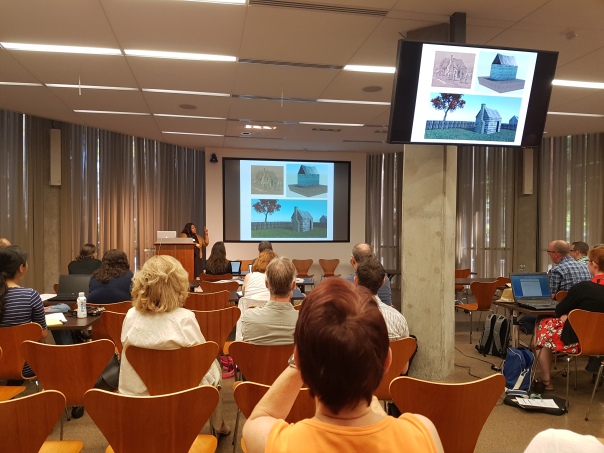
Daisy-O’lice I. Williams, University of Oregon, presents to the insitute on day 1, 20 June 2016, UCLA.
I was very fortunate to be invited to the NEH-funded Advanced Challenges in Theory and Practice in 3D Modeling of Cultural Heritage Sites Institute, hosted at University of Massachusetts in 2015 and University of California Los Angeles (UCLA) 20-23 June 2016.
Some points I noticed reoccurring over the four days (and which I also added to the #neh3D twitter stream) were:
- People are still inventing the wheel when it comes to interaction in virtual environments. But you all knew that anyway.
- There is still a gap between educators and libraries who just want to get projects made, students engaged, and assets saved and those who talk about the big metadata / ontology questions. Nobody apart from Piotr used CIDOC-CRM for example and as he and I agreed, there needs to be more useful examples for archaeologists and architects.
- We still need an open source augmented reality platform: Content providers will try to lock you in to their own devices (http://www.pcworld.idg.com.au/article/602484/google-building-its-own-smartphone-report-says/) and AR software is commercial, risky and when the AR company disappears so does your augmented reality project! To add insult to injury many AR software apps store you models offline or in a secure cloud so you cannot directly access them even though you made them.[I have just heard of ARGON, will have to investigate].
- There is no suitable 3D model+scholarly journal, the editor in chief of Digital Applications in Archaeology and Cultural Heritage, Bernard Frischer, admitted their 3D solution was not yet a fully usable solution plus Elsevier say they own the model. Actually, I think the ownership of the scholarly content is as much an issue as the lack of a suitable 3D viewer. Other journals that may offer similar issues but 3D model potential are http://intarch.ac.uk/ (“All our content is open access”) and ACM Journal on Computing and Cultural Heritage (JOCCH). However at the workshop one of the founders of SCALAR expressed interest in exploring 3D for SCALAR so hopefully something eventuates with this working party.
Many thanks to Alyson Gill (UMass) and Lisa Snyder (UCLA) for the opportunity to hear about US developments and the really cool CULTURAL HERITAGE MARKUP LANGUAGE CIDOC_CRM project that Piotr Kuroczyński (Herder Institute Germany) presented.
